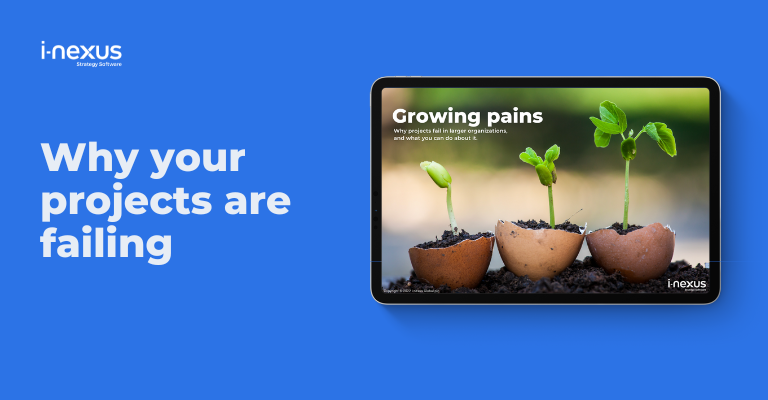The advantages of continuous improvement go beyond ROI. From motivated teams and reduced wastage to a stronger brand image, these are the 10 benefits that come with process excellence.
Written by: James Milsom, Head of Marketing
As your business traverses the world of continuous improvement it is always useful to reinforce the benefits that are associated with this business management system.
While you can focus on explaining the details when it comes to value, there are some universal benefits that can be brought into any discussion about improvement.
Whether it is the business case for adopting continuous improvement or motivating your project teams and wider business, here are 10 benefits you need to know as you lead improvement in your business.
1. Embrace the 'new normal'
Considerable conversations have been had around ‘the new normal’ due to COVID-19 in 2020, and that extends beyond the where we work into the how and when.
Workers have evolved beyond the tradition of 9-5, Monday-Friday schedules. Not only are we working from home more often, but we’re also working non-traditional hours, secondments, job shares, and fixed-term contracts.
That shift in the working pattern means companies must, and are, adjusting the structure of their employee’s contracts.
With continuous improvement, your business will introduce projects into its working patterns. This change is often swept under the rug as a benefit.
Projects open your business up to internal part-time moves, external talent who are only looking for seasonal work, and means you can invest in continually improving your employees’ skill set and introduce new talent when, and where, necessary.
2. Voice of the customer
The business world has evolved tremendously since the days of building products and selling them as a matter of fact.
We are in the digital age where customers come first. Buyers spend considerable time researching prior to making a purchase.
To that end, continuous improvement rightly places the customer first. Metrics of success will be based on defects in products, return rates, net promoter score, and others.
The voice of the customer is firmly in your ear, and for good reason. Not only to let you know of your performance today (outside of your share of their wallet), but they can and will feed your new product development and improvement projects.
3. Reduced errors and waste
By adopting a continuous improvement approach, you are committing to identifying issues in processes to limit the likelihood of errors.
That concentrated effort means you are less likely to incur issues as you produce your product / deliver your service.
That limited error rate - referred to as defects per million opportunities in Six Sigma language - also reduces waste.
As you reduce the number of errors in your processes, you become more proficient in delivering a strong customer experience.
That means you’ll have fewer instances where you waste resources, such as a printing error that harms customer relations, costs money in reprints, and more severe cases, training efforts to ensure staff follows processes.
Operational efficiencies, and eventually excellence, is the destination; reducing errors and waste are the drivers to achieving that state within your business
4. Operational efficiencies and excellence
With a focus on removing the 8 wastes, such as wasted motion, spend, broken components, and more, you will reach a state of process efficiency.
When this process efficiency is achieved, you can then look to transfer the newfound knowledge to other processes where applicable.
Operational excellence is achieved by implementing this systematic approach of measuring and improving your entire organization.
5. Stronger brand image
A natural benefit of continuous improvement is that your brand image will improve.
Why?
Because by putting in place concentrated efforts to optimize your processes and systems, you will provide better quality products and services.
You can consolidate different materials and labor, leading to fewer customer complaints and product returns.
6. More satisfied customers
The increase in brand equity through optimized processes has another effect in that you can divert once wasted sources towards innovation and diversify your product/service set to meet your customers’ current and future needs.
The continuous improvement culture is not solely about process excellence, its roots extend into the world of innovation by empowering your employees to suggest ideas and implement these where appropriate.
By listening to the voices of your team, you begin to encourage more ideas for streamlining and enhancing your products.
Be it the product design, packaging, purpose, or manufacturing, your team will have greater pride in the end product, and that only means positive things for your customers.
7. Increased employee engagement
To set the scene, consider this statistic:
The number of employees who are disengaged at work has averaged 70% for near two decades
Emplify, 2020
And increased engagement does have its benefits...
Companies with a high level of employee engagement are more profitable by a factor of 21%
Smarp, 2020
Continuous improvement has people at its core. It empowers employees to identify and solve problems that hinder their daily work.
It demonstrates that their voices and input are invaluable.
With improvement as a company-wide lens, employees are no longer 'workers'; instead, they become central to business processes, not just the outcome.
8. Lower staff turnover and associated costs
Turnover in your business is expensive.
On average, the cost of staff turnover is $30,000
Sodexo, 2020
When you consider the financial impact of having to recruit, train and then rehire staff who are disengaged or unhappy, the cost of instilling improvement in an organization is relatively inexpensive.
A better working environment and engaged workforce mean that these costs will inevitably fall.
By empowering your company to work better within their teams and across functions and divisions through improvement frameworks and software, you provide new challenges and opportunities for the growth and personal fulfillment of your staff.
If your team members know they’re making a difference, that’ll make all the difference to their longevity in your business.
9. Unified, passionate, and knowledge-seeking employees
Continuous improvement acts as the glue which binds together your business as it seeks to deliver a better customer experience.
Every part of your organization contributes to success and leads to a unified, passionate workforce.
Training and empowering your team to contribute provides opportunities for knowledge-seekers to truly excel.
More broadly, with well-defined goals, communicated plans, and easy systems to measure and course-correct performance, your business will be in a place where it can move beyond its comfort zone.
Optimizing processes and innovating across the business is a large change, but by using the right frameworks, tools, and people, you can maintain and sustain a continuous improvement culture.
Adopting this approach improves your teams’ skills and knowledge and ensures your business stays ahead of its competition.
10. Increased profits
The conversation around revenue has been left to last in this benefit list as there is much more to be gained than profit, but it is still an important advantage that cannot be left unmentioned.
If you can produce more products with less effort and cost and they sell, your profits increase.
But, you can also consider adapting your pricing strategy.
Why?
Because if your product quality increases, as too your brand image, your consumers will be more likely to accept an increased cost.
Continue learning about continuous improvement
The benefits of continuous improvement are far-reaching and extend beyond monetary measures.
Whether it’s increasing employee morale through participation or variation in their work or increasing your product’s quality, improvement is a system that truly delivers value.
Click here to learn more about continuous improvement, or take a look at these content recommendations:
-
- Transforming Porsche through continuous improvement: Read the story of how Porsche introduced Toyota experts into their world to help turn their struggling sales into transformative results via improvement.
- DMAIC v Six Sigma v Lean: Our guide to the steps and tools you'll need when driving process improvement through one of these three methodologies.
- Lean manufacturing and the evolution of Lean strategy: Learn how the Toyota Production System and Lean are connected and power the brands you know and love.
About the author
James Milsom is Head of Marketing at i-nexus. James has wide-ranging experience in markets such as telecommunications, energy, education, and software.
As Head of Marketing, his drive is to raise awareness and understanding of the challenges facing enterprises in delivering strategic objectives and transformation amidst changing markets and the obstacles traditional tools and methods present leaders.
If you’d like to talk more about Strategy Execution, reach out to James on james.milsom@i-nexus.com or connect with him on LinkedIn for the latest insights.





